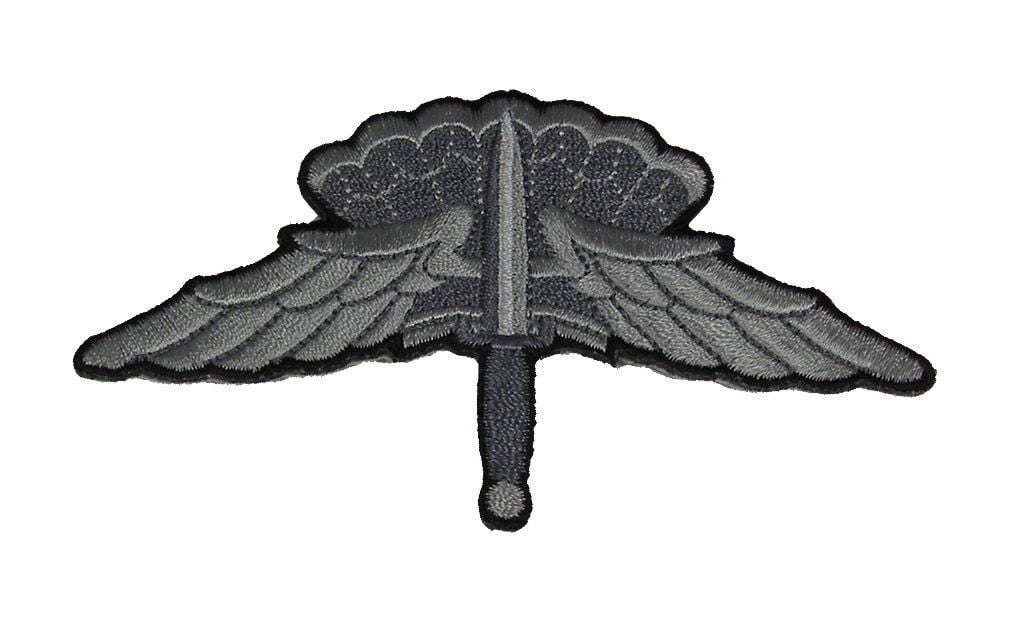

In a typical HAHO exercise, the jumper will jump from the aircraft and deploy the parachute immediately after exiting the aircraft. HAHO jumps also allow a longer travel distance due to increased under-canopy time, allowing travelling distances of more than 40 miles (64 km). In addition, HAHO parachute jumps are employed in the covert insertion of military personnel (generally special operations forces) into enemy territory, in circumstances where the covert nature of an operation may be compromised by the loud noise of parachutes opening at low altitude. The HAHO technique is used to airdrop personnel at high altitudes when aircraft are unable to fly above enemy skies without posing a threat to the jumpers. The combination of high downward speed, minimal forward airspeed, and the use of only small amounts of metal helps to defeat radar and reduces the amount of time a parachute might be visible to ground observers, enabling a stealthy insertion. In a typical HALO exercise, the parachutist will jump from the aircraft, free-fall for a period of time at terminal velocity, and open his parachute at an altitude as low as 3,000 feet (910 m) AGL depending on the mission. The load then proceeds to fall under canopy to a designated drop zone.
Freefall badge usmc free#
In the event that anti-aircraft cannons are active near the drop zone, the HALO technique also minimizes the parachutist's exposure to flak.įor military cargo airdrops, the rigged load is cut free and rolls out of the plane as a result of gravity. The technique is used to airdrop supplies, equipment, or personnel at high altitudes, where aircraft can fly above surface-to-air missile (SAM) engagement levels through enemy skies without posing a threat to the transport or load. SEAL Teams of the United States Navy expanded the HALO technique to include delivery of boats and other large items.

The first time the technique was used for combat was during the Vietnam War in Laos by members of MACV-SOG Recon Team Florida. Kittinger's friend and United States Naval Parachute Test Jumper Joe Crotwell was also among the consultants and test jumpers of the original program. As part of the experiments, on August 16, 1960, Colonel Joseph Kittinger performed the first high-altitude jump at 19.5 miles (31.4 km) above the Earth's surface. He later helped develop pressure suits and ejection seats, which have been used in jets ever since. Air Force and subjected himself to exposure to altitudes of up to 45,000 feet (14,000 m). Stapp also solved many of the problems of high-altitude flight in his earliest work for the U.S. Stapp, a research biophysicist and medical doctor, used himself in rocket sled tests to study the effects of very high g-forces. The origins of the HALO technique date back to 1960 when the United States Air Force began conducting experiments that followed earlier work by Colonel John Stapp in the late 1940s through early 1950s on survivability for pilots ejecting at high altitude. Military parachutists will often reach a terminal velocity of 126 mph (203 km/h), allowing for a jump time under two minutes. In typical HALO/HAHO insertions the troops jump from altitudes between 15,000 and 35,000 feet (4,600 and 10,700 m). In military operations, HALO is also used for delivering equipment, supplies, or personnel, while HAHO is generally used exclusively for personnel. In the HALO technique, the parachutist opens the parachute at a low altitude after free-falling for a period of time, while in the HAHO technique, the parachutist opens the parachute at a high altitude just a few seconds after jumping from the aircraft.Īlthough HALO techniques were first developed in the 1960s for military use, in recent years HALO parachute designs have been more widely used in non-military applications, including as a form of skydiving. Two techniques are used: HALO (high altitude – low opening, often called a HALO jump) and HAHO (high altitude – high opening).

High-altitude military parachuting, or military free fall ( MFF), is a method of delivering military personnel, military equipment, and other military supplies from a transport aircraft at a high altitude via free-fall parachute insertion. 2eme REP Legionnaires HALO jump from a C-160.


 0 kommentar(er)
0 kommentar(er)
